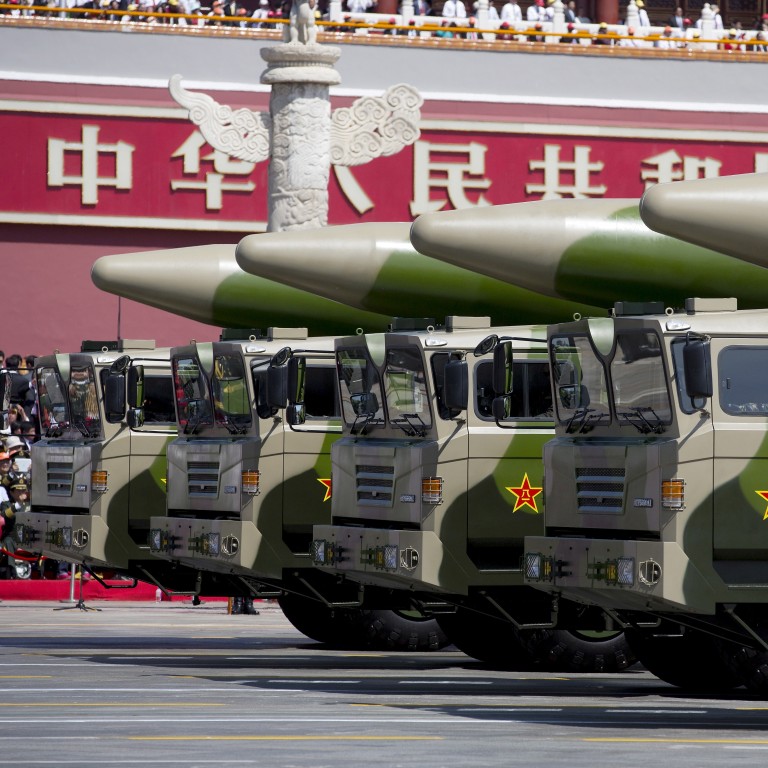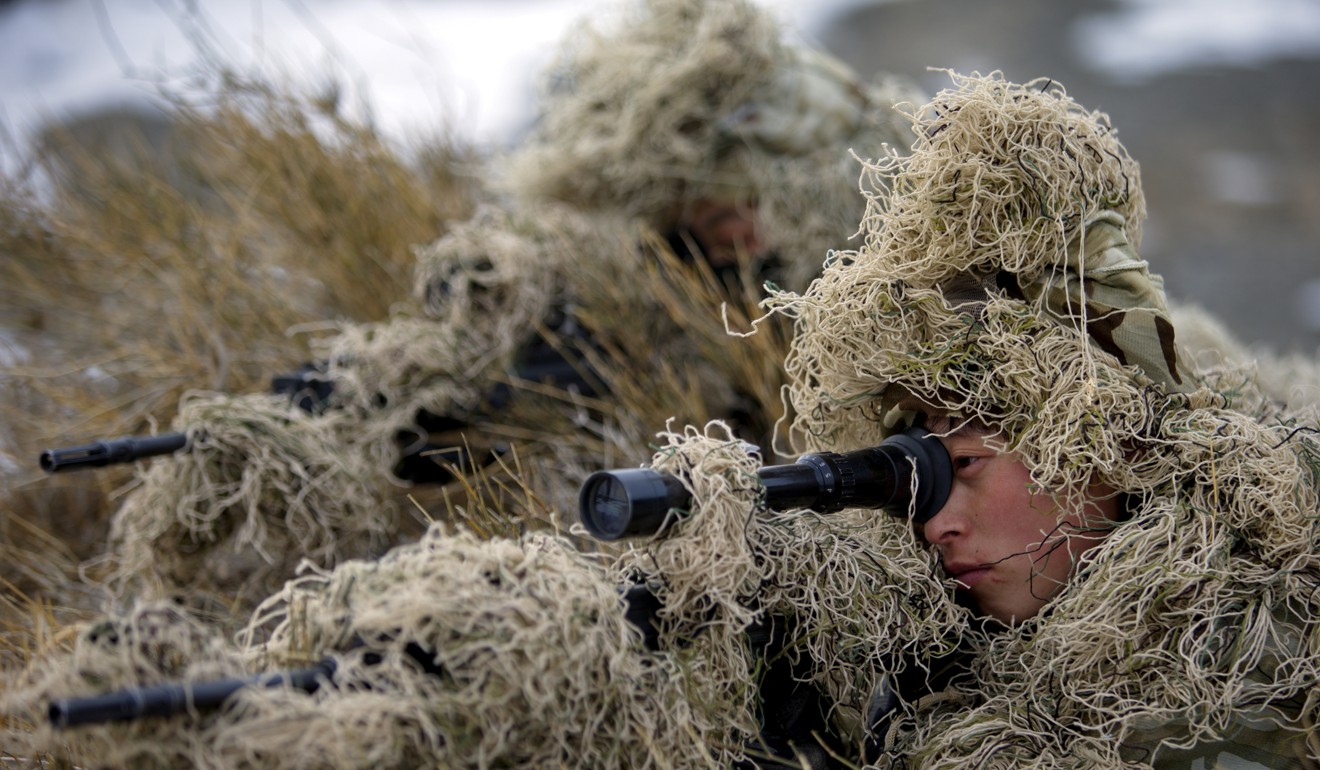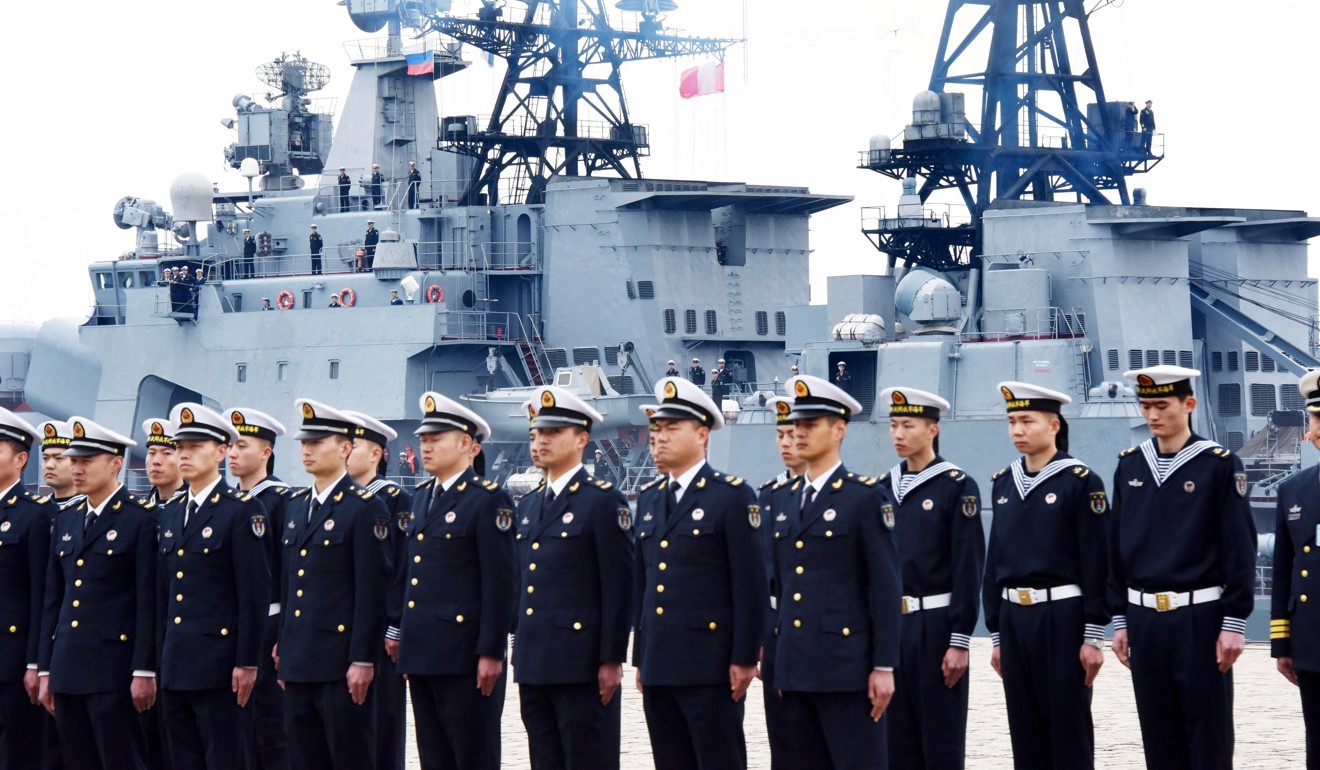
The challenges that drive up military spending – in Asia-Pacific and beyond
- Collin Koh writes that military operations in the Asia-Pacific region and elsewhere plausibly will have to do more with less in the coming years.
According to the latest data published by the Stockholm International Peace Research Institute (SIPRI), global military spending in 2018 rose 2.6 per cent year on year to US$1.82 trillion.
The United States, China, Saudi Arabia, India and France were the top five spenders, accounting for 60 per cent of the total. Spending by the US grew 4.6 per cent from 2017 to US$649 billion, while China increased its expenditure by 5 per cent to US$250 billion – a nearly tenfold increase since 1994 – making it the world’s second-largest military spender.
By comparison, military spending in South America rose by 3.1 per cent, mainly reflecting an increase in Brazil, while expenditure in Africa and the Middle East fell by 8.4 per cent and 1.9 per cent, respectively.

Military expenditure in Asia and Oceania totalled US$507 billion in 2018, or 28 per cent of the world’s total, up from just 9 per cent two decades ago.
SIPRI’s latest data would almost certainly invoke the ever-popular calls about an arms race taking place in the Asia-Pacific.
Modest rise in China military spending is no cause for alarm
Without a doubt, the ongoing tensions in the region have a major role to play – the extant Great Power rivalries, the geopolitical flashpoints of the East and South China seas, the Korean peninsula and the Taiwan Strait; but these should not be regarded as the only driving forces.
Where security threats are concerned, classical arms race theories would premise military build-ups upon interstate dynamics.
However, in today’s context, security threats that would spur increased defence outlays are no longer confined to these so-called traditional challenges.
Whereas Sino-American arms dynamics could well be attributed to traditional concerns related to interstate dynamics over unresolved flashpoints, much of the rest of the Asia-Pacific region confronts a holistic array of security concerns, especially those that are transboundary and transnational in nature – natural calamities, violent extremism and even the mundane, daily occurrences of cross-border smuggling and illegal fishing, to name just a few examples.
In recent times, the scourges of illegal drug trade and human trafficking have attracted attention.
Beyond the obvious observable phenomena, such as interstate dynamics that drive in no small part the Asia-Pacific’s military expenditures, certain long-standing questions, so far, have not been satisfactorily addressed.

The first concerns the role played by intrastate, inter-agency rivalries in driving increases in military spending. Suffice it to note, security challenges are not only dealt with by civilian law enforcement agencies.
In Asia-Pacific, military organisations continue to take on the burden of such peacetime, constabulary missions. In no small part, this has also much to do with asserting relevance – militaries need to demonstrate that their upkeep is not only designed for the maintenance of peacetime deterrence and warfighting purposes, but also for the promotion of national socioeconomic development, peace and stability.
Therefore, little wonder that many navies in the Asia-Pacific continue to run counter-illegal fishing operations, for instance. In Southeast Asia, especially, navies remain the leading maritime security institutions that possess better access to funding and resources than their civilian maritime law enforcement counterparts. Thus, intrastate, inter-agency rivalry as a dynamic that drives military expenditures cannot be glossed over.
China keeps lid on military spending for fourth year in a row
The other question that remains not so satisfactorily addressed is the debate about “hidden budgetary overlays”, which continues to be a salient one. Are military expenditures reported or captured accurately? Are those figures the real amount of money invested into defence outlays?
The third question relates to how much of the expenditures actually went into manpower, as opposed to other capital investments, including defence-related research and development? It has become clearer these days that armaments are becoming increasingly sophisticated and yet costlier at the same time. Militaries can no longer seek a one-for-one replacement of obsolete equipment, though this issue can be offset, at least partially, by the focus on multifunctional assets.
For example, it has become more common to see one single warship or fighter jet type replacing more than one class of pre-existing platforms. The trend appears to be towards leaner fleets of assets – the focus on quality per platform over quantity, with each asset being more flexible and capable than its predecessor. Though of course, that entails costs.
Another associated issue that militaries confront is that manpower and manning levels have increasingly become a major challenge. Push factors such as the rigours and privations service people tend to undergo, and pull factors such as the attractiveness of more lucrative, private sectors that could pay more for the specialised skill sets of military people relevant to those fields not only affect recruitment but also, the maintenance of proper manning levels in peacetime, which have direct ramifications for force readiness.
Advanced militaries tend to compensate for manpower shortages, especially where their countries’ declining birth rates could carry significant long-term implications, through seeking automation as well as multitasking a more limited pool of individuals.
India and Japan increase military spending, ‘driven by China tension’
Again, it leads to the earlier problem – attrition rates within the rank and file, and also raising the cost of capital investments (computers and automation do not come cheap). It becomes a vicious cycle for militaries.
The US military, for example, is facing manpower woes across the armed services, spurring changes to its recruitment and manpower retention policies to help the forces maintain primacy; it is not just about funnelling money into purchasing the most hi-tech equipment.
Likewise, even for China, notwithstanding the influx of funding to support various military procurement programmes – as seen, for example, in its phenomenal rate of naval build-up in recent years –, it is still grappling with more mundane manpower woes, not least of which is the challenge of ensuring social welfare and employment for demobilised military personnel – a cause for reported unrest in the country these days.
Therefore, while rising military expenditures are cause for concern in the context of extant interstate geopolitical dynamics – which are often regarded as the classical drivers of military build-ups – it would be necessary to examine the other factors.
It is likely that militaries in the Asia-Pacific will continue to confront a host of external and internal challenges, potentially resulting in a continued upwards trajectory of military spending in the coming years.
Yet at the same time, it would be illusory or even misleading to conclude that rising military expenditures mean more wherewithal for regional militaries to fulfil their duties.
It is plausible that militaries in the Asia-Pacific – or in fact, worldwide for that matter – will have to keep doing more with less.
The rising expenditures do not necessarily make military service any easier.
Meanwhile, these tangible indicators will continue to provoke justifiable concerns about the state of geopolitics around the world, including the festering dynamics in the Asia-Pacific region.
Collin Koh is research fellow at the Institute of Defence and Strategic Studies, a constituent unit of the S. Rajaratnam School of International Studies, based at Nanyang Technological University, Singapore.

